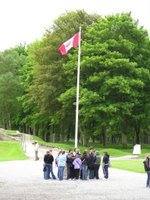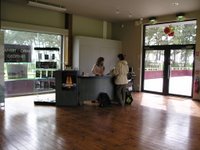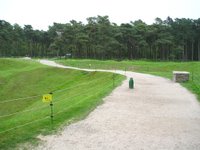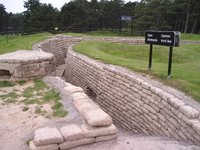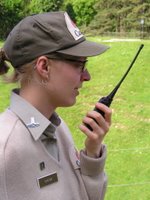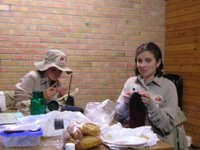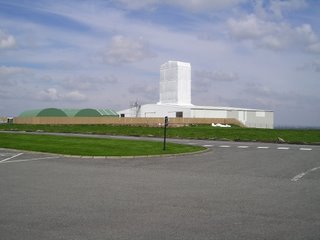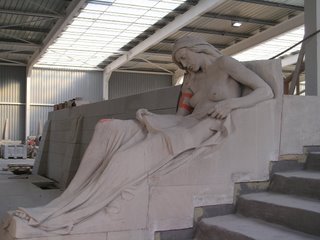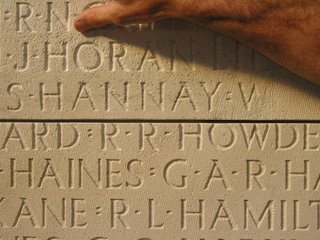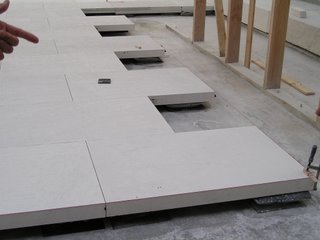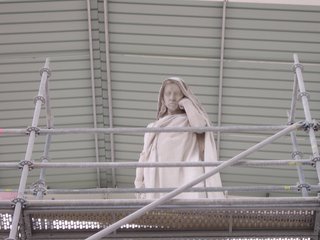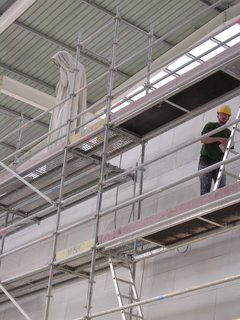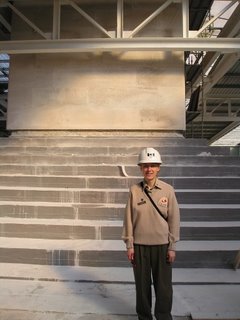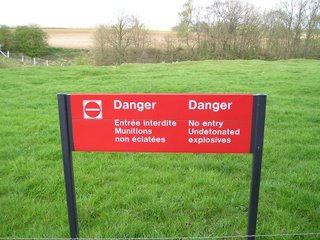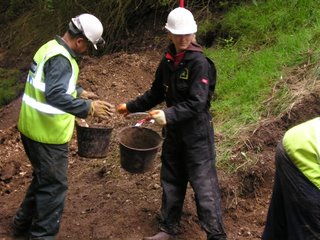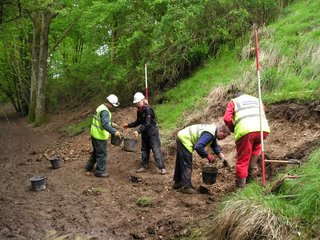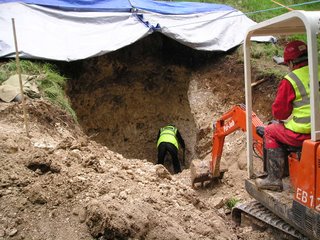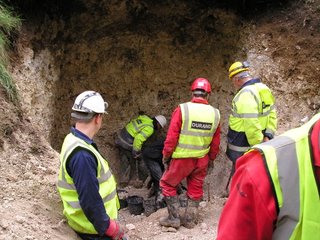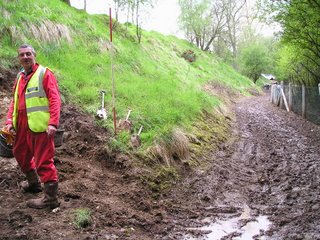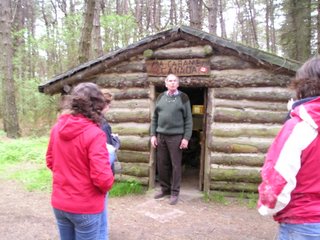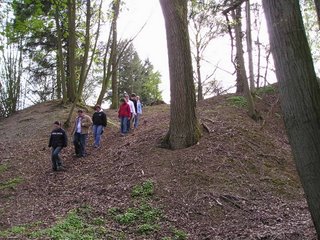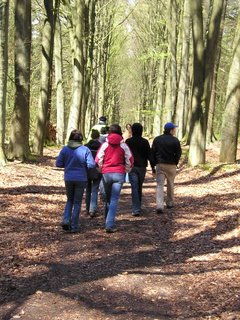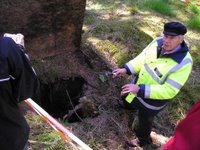Vauban
Vauban is the street on which I live. Here is a shot of the house.
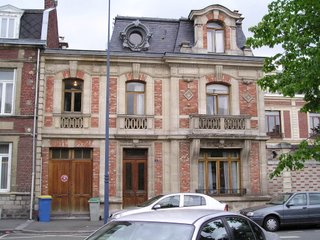 Allow me to give you the tour.
Allow me to give you the tour.First, my room. I share it with two lovely Newfoundlanders, but as you can see, we have plenty of space. And, more importantly, plenty of closet space! What a blessing that we are all very sound sleepers, because there is quite a bit of coming and going at all hours, by all parties concerned.
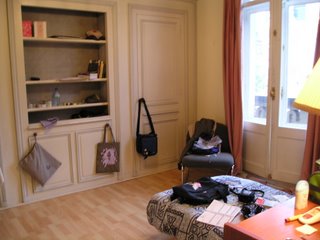
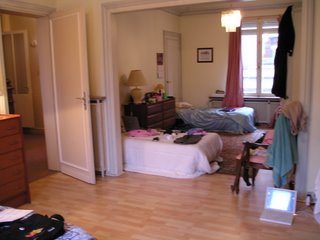
We have 3 floors, 2 full bathrooms, one pink, one blue, and 2 toilet closets. As far as toilets go, we're covered.
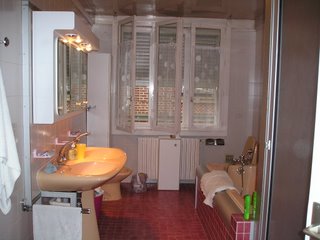
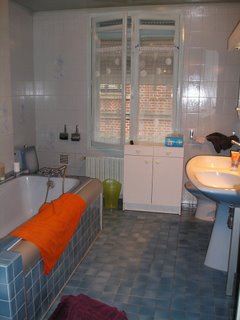 Here you can see the hallway of closets. There is definetly more closet space than we need. This corridor can double as a place to keep guests! The closets can sleep at least 4!
Here you can see the hallway of closets. There is definetly more closet space than we need. This corridor can double as a place to keep guests! The closets can sleep at least 4!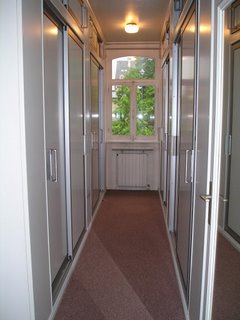 The living room. This space is also called "the parlour" or "the piano bar." One roommate sometimes treats us to some entertainment on the keyboard he rented.
The living room. This space is also called "the parlour" or "the piano bar." One roommate sometimes treats us to some entertainment on the keyboard he rented. 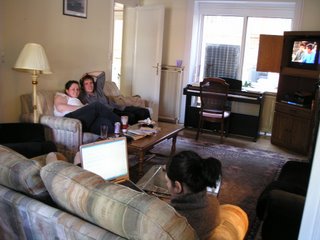 Here is my roommate, Angela, in the kitchen. This space is rather small for 7 people trying to make dinner all at the same time. What is even more tricky is sharing the one fridge and one bar fridge between 7.
Here is my roommate, Angela, in the kitchen. This space is rather small for 7 people trying to make dinner all at the same time. What is even more tricky is sharing the one fridge and one bar fridge between 7. 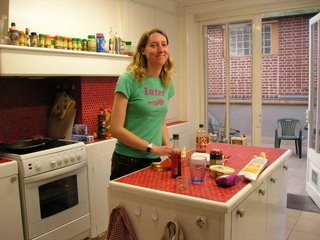 Everyone always has to work on Sundays and so after work we come home and while 2 people make dinner, the rest clean the house. This was our first "family dinner."
Everyone always has to work on Sundays and so after work we come home and while 2 people make dinner, the rest clean the house. This was our first "family dinner." 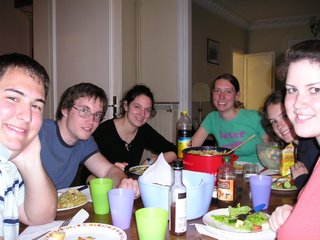 When a party happens at Vauban, it's called a "Vau-bash." At the first such event there was cheese fondue in the kitchen.
When a party happens at Vauban, it's called a "Vau-bash." At the first such event there was cheese fondue in the kitchen. 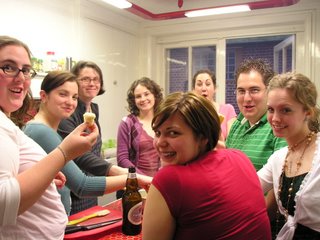 All in all, it's a nice place to live. My roommates are swell and there is always something going on. I'm a 10 minute walk from the train station, the grocery store, bakery, and pretty much all the necessities. Daily life in France is proving to be rather nice.
All in all, it's a nice place to live. My roommates are swell and there is always something going on. I'm a 10 minute walk from the train station, the grocery store, bakery, and pretty much all the necessities. Daily life in France is proving to be rather nice.
